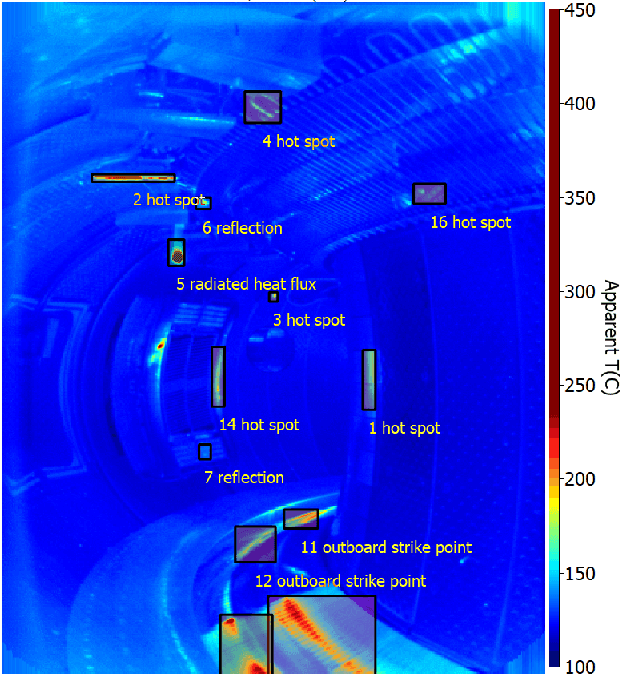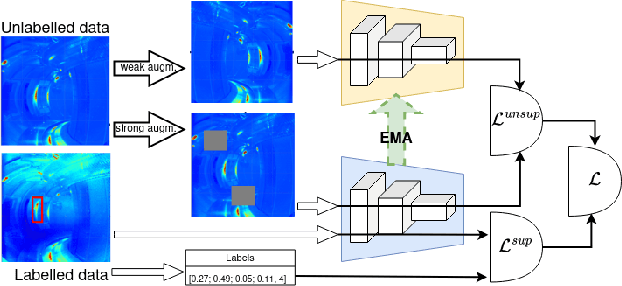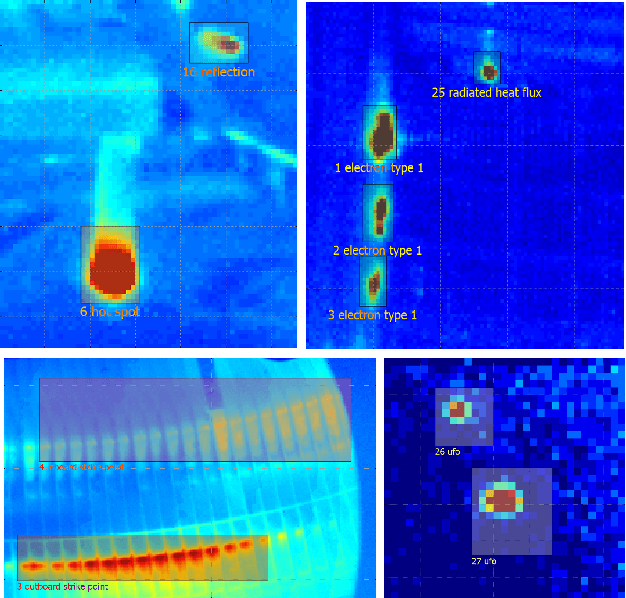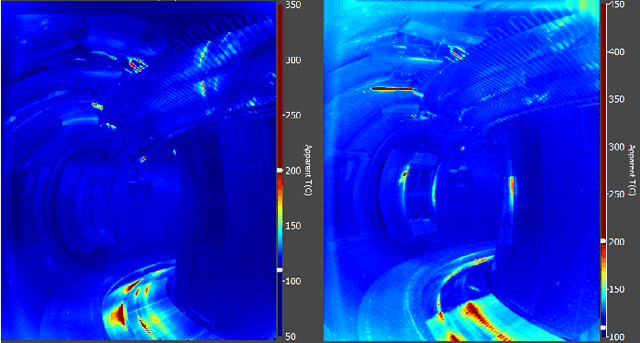Detection of Thermal Events by Semi-Supervised Learning for Tokamak First Wall Safety
Paper and Code
Jan 19, 2024



This paper explores a semi-supervised object detection approach to detect hot spots on the internal wall of Tokamaks. A huge amount of data is produced during an experimental campaign by the infrared (IR) viewing systems used to monitor the inner thermal shields during machine operation. The amount of data to be processed and analysed is such that protecting the first wall is an overwhelming job. Automatizing this job with artificial intelligence (AI) is an attractive solution, but AI requires large labelled databases which are not readily available for Tokamak walls. Semi-supervised learning (SSL) is a possible solution to being able to train deep learning models with a small amount of labelled data and a large amount of unlabelled data. SSL is explored as a possible tool to rapidly adapt a model trained on an experimental campaign A of Tokamak WEST to a new experimental campaign B by using labelled data from campaign A, a little labelled data from campaign B and a lot of unlabelled data from campaign B. Model performances are evaluated on two labelled datasets and two methods including semi-supervised learning. Semi-supervised learning increased the mAP metric by over six percentage points on the first smaller scale database and over four percentage points on the second larger scale dataset depending on the employed method.
 Add to Chrome
Add to Chrome Add to Firefox
Add to Firefox Add to Edge
Add to Edge